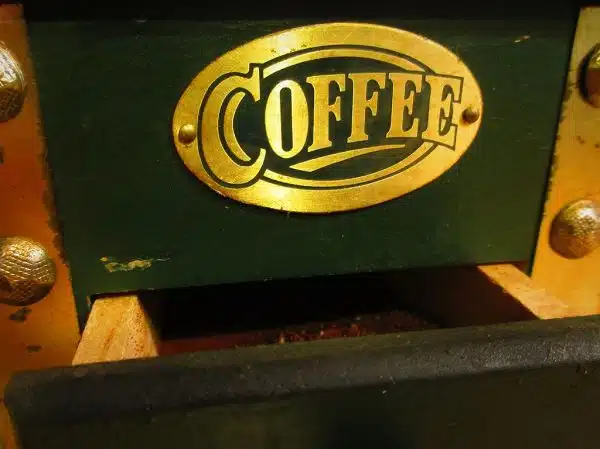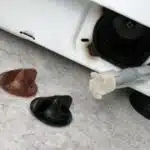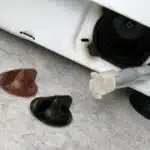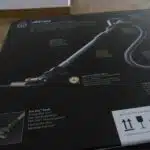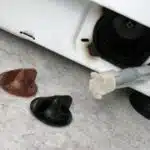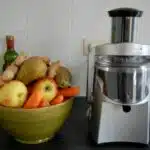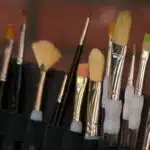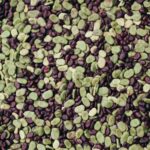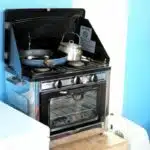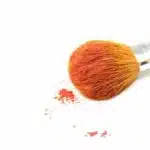As a coffee grinder cleaning expert, I believe that the cleanliness of your coffee grinder is crucial to the quality of your brewed coffee. With regular use, coffee grinders can become a breeding ground for bacteria and mold, which can negatively affect the taste and aroma of your coffee. Proper cleaning and maintenance are essential to ensure that you are getting the best possible cup of coffee every time.
In this article, I will share with you my tips and tricks for cleaning different types of coffee grinders. Whether you have a blade or burr grinder, manual or electric, these methods will help you keep your coffee grinder in top condition. By following these steps regularly, you can extend the life of your machine and enjoy fresh, delicious coffee every day without any unwanted flavors or odors. So let’s get started!
Why Clean Your Coffee Grinder Regularly
Did you know that an unclean coffee grinder can contain up to 1.5 billion colony-forming units of bacteria per gram of coffee? That’s more than the amount found on a public toilet seat! As a coffee grinder cleaning expert, I cannot emphasize enough the importance of regular cleaning to ensure your health and safety.
Not only is an unclean coffee grinder a breeding ground for harmful bacteria, but it can also affect the taste and quality of your coffee. The buildup of old coffee oils and residue can create a rancid flavor that ruins even the finest beans. Additionally, if left unchecked, this residue can accumulate and damage the internal components of your machine, resulting in costly repairs or replacements.
By taking the time to properly clean your coffee grinder regularly, you not only protect yourself from potential health risks but also ensure that every cup of coffee you brew tastes as it should. In the next section, we will discuss understanding the components of your coffee grinder so that you can effectively clean each part for optimal performance.
Understanding The Components Of Your Coffee Grinder
- There are three main types of coffee grinders: blade grinders, burr grinders, and manual grinders.
- Coffee grinders consist of a hopper, grind chamber, burrs, and motor.
- The hopper holds the beans, the grind chamber holds the grounds, and the burrs grind the beans.
- The motor moves the burrs and grinds the beans.
- For optimal performance, coffee grinders should be regularly cleaned, emptied, and lubricated.
- It is important to read the instructions of your particular coffee grinder before cleaning to ensure proper maintenance.
Types Of Grinders
Are you looking to invest in a coffee grinder but don’t know where to start? Well, choosing the right type of grinder is crucial for achieving the perfect grind and flavor in your coffee. There are two main types of grinders: blade and burr.
Blade grinders use metal blades to chop the beans into smaller pieces, while burr grinders crush the beans between two surfaces. The pros of blade grinders are their affordability and compact size, making them perfect for small kitchens or occasional use. However, they tend to produce an inconsistent grind size, which can result in uneven extraction and bitter coffee. In contrast, burr grinders offer a more precise and consistent grind size that leads to better flavor extraction. They come in two subtypes: conical and flat burrs. Conical burrs are more affordable than flat ones but produce less consistent results.
When deciding which grinder is right for you, consider your budget, brewing method, and desired taste profile. If you’re on a tight budget or only brew coffee occasionally, a blade grinder may be suitable for your needs. However, if you’re a serious coffee enthusiast who wants to extract every bit of flavor from your beans or use different brewing methods such as pour-over or espresso, investing in a high-quality burr grinder will be worth it in the long run. Remember that the quality of your coffee grinder directly affects the quality of your cuppa joe!
Grinder Parts
As a coffee grinder cleaning expert, I understand the importance of maintaining your equipment to ensure the best quality coffee. One crucial aspect of understanding your coffee grinder is knowing its components. The main parts of a burr grinder are the hopper, burrs, motor, and collection chamber. The hopper is where you pour in the beans, which then fall into the burrs for grinding. The burrs are responsible for crushing the beans evenly and precisely, while the motor powers the grinding process. Lastly, the collection chamber catches the ground coffee.
To keep your grinder functioning at its best, regular cleaning and maintenance are necessary. Cleaning tips include emptying and wiping down all parts after each use, as well as using a brush or cloth to remove any leftover grinds. It’s also essential to deep clean your grinder every few months by disassembling it and scrubbing with soap and water or using specific cleaning products designed for grinders.
Maintenance advice includes checking for wear and tear on the burrs and replacing them if necessary, as well as keeping an eye on any unusual noises or malfunctions that may indicate a problem with the motor or other components. By understanding each part of your coffee grinder and taking proper care of it through regular cleaning and maintenance, you can ensure that you’re always serving up top-quality coffee to yourself and others.
Maintenance Tips
As a coffee grinder cleaning expert, it’s essential to understand the importance of maintenance tips to achieve longevity benefits. Preventative measures and regular maintenance will ensure that your coffee grinder functions optimally for an extended period, providing you with top-quality coffee every time.
One vital maintenance tip is checking for wear and tear on the burrs regularly. Replacing the burrs when necessary will help avoid uneven grinding or burning of beans, which can lead to inconsistent coffee taste. Additionally, keeping an eye out for unusual noises or malfunctions in other components such as the motor is crucial to prevent further damage.
Another critical aspect of maintenance is deep cleaning your grinder every few months. Disassemble all parts and thoroughly scrub with soap and water or specific cleaning products designed for grinders to remove any buildup of oils, residues, or trapped beans that can affect the quality of your coffee. By following these simple but effective maintenance tips, you’ll maintain your coffee grinder’s longevity and enjoy top-quality coffee every time you grind.
Basic Cleaning Supplies You Need
To effectively clean your coffee grinder, it is important to have the right cleaning supplies. Some basic cleaning supplies you need include a soft-bristled brush, dish soap, and a microfiber cloth. These items will help to remove the coffee oils and grinds from your machine, leaving it fresh and ready for use.
A soft-bristled brush is essential for removing any leftover grinds or debris from your coffee grinder’s burrs or blades. Be sure to use a gentle touch when brushing so as not to damage them. Once you have removed all visible debris, it is time to move onto washing with dish soap. Simply mix some dish soap with warm water and use a microfiber cloth to wipe down the exterior of the machine.
Alternative methods and eco-friendly options are also available for those looking for more natural cleaning solutions. For instance, you can use vinegar instead of dish soap to disinfect your grinder naturally. All you need to do is fill the reservoir with white vinegar and run the grinder until empty. Rinse thoroughly with water afterward.
Moving onto our next section, we will discuss in detail how to clean a blade coffee grinder. By following these simple steps, you can ensure that your machine stays in top working condition for years to come.
Cleaning A Blade Coffee Grinder
With the basic cleaning supplies in hand, it’s time to delve into blade coffee grinder maintenance. However, before we begin, let’s first address common mistakes to avoid. One of the biggest blunders people make is not cleaning their grinders regularly. This leads to a build-up of stale coffee oils and debris that can affect both the taste of your coffee and the longevity of your machine.
Another mistake is using inappropriate cleaning materials or methods. Abrasive cleaners, including baking soda and vinegar, are often touted as natural solutions for cleaning grinders, but they can damage the blades or other components. On the other hand, using a damp cloth or sponge may leave moisture behind in hard-to-reach areas that can cause rusting or clogging.
Now that we’ve covered what to avoid while cleaning your blade coffee grinder let’s get into how to clean it properly. Here is a step-by-step guide:
- Unplug the appliance from its power source.
- Remove any visible debris from around the blades with a brush or dry cloth.
- Sub-list A: Use a toothbrush for hard-to-reach crevices.
- Sub-list B: For stubborn stains, use an appropriate cleaner recommended by the manufacturer.
- Disassemble any removable parts and wash them with warm water and mild soap.
- Sub-list A: Rinse well and dry with a soft towel.
- Sub-list B: Avoid immersing electrical parts in water. By following these steps regularly, you’ll maximize your blade coffee grinder’s lifespan and ensure every cup of coffee tastes fresh and flavorful. Next up is burr coffee grinder maintenance—stay tuned!
Cleaning A Burr Coffee Grinder
Cleaning burr coffee grinders is an essential task that every coffee lover needs to know. The accumulation of coffee beans and oil can make the burrs clog, which leads to uneven grind size and compromise the taste of your coffee. Therefore, regular cleaning is necessary to ensure your burr grinder stays in top condition.
Tips for maintaining burr grinders include using a cleaning brush, vacuum cleaner, or rice grains. A cleaning brush can remove the residue of ground beans and oil from the burrs. A vacuum cleaner can suck out any remaining particles inside the grinder. Alternatively, rice grains can be used as an abrasive material that helps in removing stubborn residues. However, it is important to note that using rice grains may cause damage to some types of burrs.
Another tip for maintaining a burr grinder is by disassembling and washing its parts with soap and water. It is recommended to do this once a month or whenever you notice visible signs of dirt buildup on your grinder’s parts. Make sure to dry the parts thoroughly before reassembling them.
Table:
| Advantages | Disadvantages |
|---|---|
| Consistent Grind Size | Expensive |
| Minimal Heat Transfer | Takes Up Space |
| Easy To Clean | Loud Noise |
In summary, cleaning your burr coffee grinder is crucial for preserving its longevity and ensuring consistent quality coffee every time you brew. Use a combination of tools such as cleaning brushes, vacuums, or rice grains to maintain its cleanliness. For more thorough cleaning, take apart your machine and wash each piece with soap and water. By following these tips for maintaining your burr grinder, you will extend its lifespan while also improving the flavor profile of your morning cup of joe.
Moving on to our next topic: Cleaning a manual coffee grinder…
Cleaning A Manual Coffee Grinder
Have you ever wondered how to properly clean a manual coffee grinder? As a coffee grinder cleaning expert, I understand that it can be frustrating when your coffee tastes off or has a strange flavor. Often, the culprit is a dirty coffee grinder. Cleaning your manual coffee grinder is essential to maintaining its quality and prolonging its lifespan.
Cleaning frequency is crucial when it comes to manual coffee grinders. It’s recommended that you clean your manual coffee grinder after every use or at least once a week if you’re not using it regularly. Neglecting to clean it regularly can lead to stale and bitter-tasting coffee. To make cleaning easier, consider investing in a brush specifically designed for cleaning manual grinders.
When it comes to cleaning a manual coffee grinder, there are alternative methods that you can use aside from the traditional method of disassembling the parts and washing them with soap and water. One such method is using uncooked white rice to remove any leftover oils or residue. Simply grind some uncooked white rice in your grinder until it becomes powdery, then dump out the powder and wipe down the inside of the grinder with a dry cloth. Another alternative cleaning method is using bread crusts or old crusty bread slices in place of rice. Both methods work similarly and are effective in removing stubborn grinds without damaging your grinder’s burrs.
As an expert in coffee grinders, I understand that proper maintenance is key to keeping your brew flavorful and fresh. Now that we’ve covered how to clean a manual coffee grinder, let’s move on to discussing how to clean an electric one.
Cleaning An Electric Coffee Grinder
Before cleaning an electric coffee grinder, it is important to ensure that the power is turned off and the blades are stopped moving. Once the grinder is prepared for cleaning, it is recommended to use a soft brush and a damp cloth to scrub away any residue or grounds. For more stubborn deposits, a damp cloth and mild detergent can be used to remove any remaining residue. Finally, it is important to dry the grinder thoroughly before turning it back on.
Preparing The Grinder
As a coffee grinder cleaning expert, it is essential to prepare the grinder before starting the cleaning process. The first step in preparing an electric coffee grinder for cleaning is to unplug it from the power source. Next, remove any leftover coffee beans and grounds from the hopper and grind chamber. Make sure to dispose of them properly.
After removing residue, check for wear and tear on the burrs or blades. If there are any cracks or chips, they will need to be replaced before continuing with the cleaning process. Additionally, if there is excessive build-up around the burrs or blades, use a brush or toothbrush to gently remove it.
By taking these steps to prepare your electric coffee grinder for cleaning, you can ensure that it will be cleaned effectively and efficiently. Remember to always unplug your grinder before beginning any cleaning process and regularly check for signs of wear and tear to ensure optimal performance. With proper maintenance, your coffee grinder will continue to provide delicious cups of coffee for years to come!
Cleaning The Grinder
Once you have prepared your electric coffee grinder for cleaning, it’s time to move on to the actual cleaning process. Keeping your coffee grinder clean not only ensures that it will produce high-quality coffee but also prolongs its lifespan. To achieve optimum cleaning efficiency, it is recommended to use time-saving techniques.
One such technique is using a brush or toothbrush to remove any remaining residue from the burrs or blades. Gently brushing around these areas helps to ensure that all leftover coffee particles are removed. You can also use compressed air or a vacuum cleaner with a brush attachment to clean out stubborn residue.
Another useful method for deep-cleaning an electric coffee grinder is by using rice grains. Simply fill the hopper with uncooked rice and grind it through the machine. The abrasive nature of the rice gently scrubs away any build-up, leaving your grinder free of debris and ready for use once again.
By following these time-saving techniques, you can easily keep your electric coffee grinder in excellent condition without spending too much time and effort on cleaning it. Remember to schedule regular cleaning sessions to maintain optimal performance and prolong the life of your machine. With proper care and maintenance, you can enjoy delicious cups of freshly ground coffee every day!
How Often Should You Clean Your Coffee Grinder
Cleaning your coffee grinder is an essential routine that any coffee enthusiast should not ignore. A clean grinder ensures that you get a consistent and flavorful cup of coffee every time. The benefits of cleaning your coffee grinder are plenty, from eliminating unpleasant flavors to preventing the buildup of stale coffee oils.
One of the signs of a dirty grinder is when you notice off-flavors in your coffee. This indicates that your grinder needs a thorough cleaning as stale oils and residue have accumulated over time. Another sign is when the grinder starts producing inconsistent grinds, which can result in under-extracted or over-extracted coffee. Regular cleaning will prevent these issues, ensuring that your coffee tastes its best.
The frequency at which you should clean your grinder depends on how often you use it. For daily users, it’s recommended to clean the grinder weekly or bi-weekly at minimum. However, if you’re an infrequent user, you may only need to clean it monthly or every other month. By adhering to this schedule, you’ll ensure that your grinder stays in top condition and produces excellent-tasting coffee every time. Next, we’ll explore how to deep clean your coffee grinder for optimal performance.
Deep Cleaning Your Coffee Grinder
After establishing a routine for regularly cleaning your coffee grinder, it is important to also incorporate deep cleaning into your maintenance schedule. This process involves taking apart the grinder and cleaning all of its components thoroughly. While it may seem daunting at first, doing so will ensure that your grinder continues to produce fresh and flavorful coffee.
Before beginning the deep cleaning process, it is important to gather all necessary tools and materials. These may include a screwdriver, brush or toothbrush for scrubbing, and DIY cleaning solutions such as baking soda or vinegar. For those who are uncomfortable with taking apart their grinder or who do not have the time or resources to do so, professional cleaning services are also available.
Regardless of whether you choose to deep clean your grinder yourself or seek professional help, it is important to address any stains or odors that may be present. Over time, coffee oils can build up on the components of the grinder and cause an unpleasant smell or taste in your coffee. By removing these stains and odors from your grinder, you can ensure that each cup of coffee tastes as fresh as possible.
Removing Stains And Odors From Your Grinder
Keeping your coffee grinder clean is essential to ensure that it continues to function properly. However, over time, stains and odors can build up in your grinder and affect the quality of your coffee. Thankfully, there are several ways to remove stubborn stains and unpleasant odors from your grinder.
One of the most effective ways to remove stains from your coffee grinder is by using natural cleaning solutions. You can use a mixture of baking soda and water to create a paste that you can apply directly to the stained areas. Let the paste sit for a few minutes before wiping it off with a damp cloth. Another option is to use white vinegar diluted with water as a cleaning solution. Simply soak a cloth in the solution and wipe down the affected areas.
In addition to removing stains, it’s also important to eliminate any lingering odors in your coffee grinder. One way to do this is by using a small amount of uncooked rice and grinding it in your machine. The rice helps absorb any unwanted smells while also removing any remaining debris or oils from previous grinds. Alternatively, you can also use activated charcoal or coffee beans as odor absorbers for your grinder.
Transition: Now that you know how to remove stains and odors from your coffee grinder, let’s move on to some tips on how to maintain its cleanliness so that you can continue enjoying great-tasting coffee every day.
Maintaining Your Coffee Grinder
As a coffee grinder cleaning expert, I understand the importance of maintaining your coffee grinder. It is essential to keep the parts of your coffee grinder clean to ensure consistent and fresh-tasting coffee. Neglecting to clean your coffee grinder can lead to stale, rancid coffee and even damage to the machine.
Coffee grinder maintenance benefits not just the quality of your coffee but also prolongs the lifespan of your machine. Regular cleaning prevents clogging, reduces wear and tear, and ensures that all components are working correctly. Additionally, it eliminates any buildup or residue that could affect the taste of your coffee.
One crucial aspect of maintaining a coffee grinder is cleaning its parts regularly. The burrs or blades should be cleaned weekly, while other removable parts such as the hopper and ground container should be washed every few weeks. Use a brush or cloth to remove any leftover grounds or debris before washing them in warm soapy water. Make sure to dry them thoroughly before reassembling your grinder.
To troubleshoot common coffee grinder issues, you must first identify its symptoms accurately. Grinding too slowly or unevenly may indicate dull burrs, worn-out blades or motor failure. On the other hand, fast grinding may indicate overused blades or burrs that require replacement. By understanding these symptoms and addressing them promptly with appropriate solutions, you can ensure that your coffee grinder runs efficiently for years to come.
Troubleshooting Common Coffee Grinder Issues
When it comes to troubleshooting common coffee grinder issues, two of the most frustrating problems are uneven grinds and stuck grinders. Uneven grinds can result in an inconsistent brew, while a stuck grinder can bring your morning routine to a screeching halt. Fortunately, there are some simple solutions that can help you get your grinder back on track.
For uneven grinds, the first step is to make sure that the beans are being fed into the burrs at a consistent rate. If you’re using a manual grinder, this may require adjusting your technique slightly. With an electric grinder, you may need to adjust the settings or clean out any clogs that could be causing the issue. If none of these solutions work, there may be an issue with the burrs themselves and they may need to be replaced.
If your coffee grinder is stuck, it’s important not to force anything as this could cause damage. Instead, try removing any visible obstructions and cleaning out any debris that could be causing the issue. You may also want to check for any loose parts or screws that could have come undone during use. And if all else fails, don’t hesitate to reach out to a professional for assistance.
Next up: upgrading your coffee grinder for easier cleaning!
Upgrading Your Coffee Grinder For Easier Cleaning
After troubleshooting common coffee grinder issues, it’s essential to maintain your machine for optimal performance. Cleaning your coffee grinder is a task that can be daunting but necessary. Think of it like washing your car; you don’t have to do it every day, but it’s best done regularly to keep it in top condition.
Cleaning a coffee grinder is not rocket science, and with the right tools and knowledge, you can do it in no time. Here are some maintenance tips that will help you keep your grinder clean:
- Remove any leftover grounds from the hopper and burrs after each use.
- Wipe down the exterior of the machine with a damp cloth.
- Use a brush or toothbrush to clean out hard-to-reach areas.
- Consider upgrading options like removable burr grinders or those with built-in cleaning systems.
As a coffee grinder cleaning expert, I recommend deep cleaning your machine every few months by disassembling it entirely and using specialized cleaning products. However, this process can be time-consuming and intimidating for some users. Therefore, upgrading your coffee grinder with self-cleaning features or removable burrs may make the cleaning process more manageable.
In conclusion, regular maintenance is key to extending the lifespan of any appliance, especially coffee grinders. With these pro tips for cleaning your coffee grinder and possible upgrading options, you can enjoy freshly ground coffee without worrying about dirty equipment affecting the taste of your brews.
Pro Tips For Cleaning Your Coffee Grinder
To ensure that your coffee grinder is always in top condition, it’s important to clean it regularly. There are several methods you can use to clean your grinder effectively. One of the most popular ways is to use a cleaning tablet or powder, which is specifically designed for removing coffee oil buildup from the burrs and other components.
Alternatively, you can also use eco-friendly solutions such as baking soda and vinegar or citric acid as a substitute for commercial cleaning products. These alternatives are just as effective in removing stubborn oils and stains while being gentle on the environment. However, it’s important to note that using these methods may require more effort and time compared to using cleaning tablets or powders.
Overall, regular cleaning of your coffee grinder is crucial in maintaining its performance and extending its lifespan. Whether you choose to use commercial cleaning products or alternative methods, the key is to be consistent with your cleaning routine. By doing so, you’ll be able to enjoy fresh coffee with a clean grinder every time you brew.
Enjoying Fresh Coffee With A Clean Grinder
Grinder maintenance is essential for ensuring that your coffee remains fresh with every cup. A clean grinder leads to a better-tasting coffee, and it also helps to avoid any potential health hazards associated with the accumulation of bacteria in the machine. Cleaning your coffee grinder also extends its lifespan and saves you money in the long run.
To clean your coffee grinder, start by unplugging the machine and disassembling it. The hopper, burrs, and grounds container should be removed and cleaned separately. Use a soft-bristled brush or toothbrush to remove any leftover particles from the burrs. Alternatively, you could use a cleaning tablet specially designed for cleaning grinders.
Avoiding stale coffee is another reason why regular grinder maintenance is crucial. When left uncleaned, coffee oils build up on the burrs, which can cause rancidity and give your coffee a stale taste. This buildup can also clog your grinder’s burrs, making it harder for them to grind beans effectively. By regularly cleaning your grinder, you can prevent these issues from occurring and ensure that your coffee always tastes fresh with every sip.
Remember that maintaining your coffee grinder is just as important as owning one if you want to enjoy consistently great-tasting coffee at home. By following these simple steps outlined above for cleaning your machine regularly, you’ll not only extend its lifespan but also ensure that every cup of coffee brewed is as fresh as possible without any stale notes or off flavors creeping into the brew!
Conclusion
As a coffee grinder cleaning expert, it is important to understand the significance of keeping your coffee grinder clean. Failure to do so could result in poor quality coffee, unwanted odors and even damage to your machine. Regular cleaning of your coffee grinder not only ensures that your coffee tastes fresh and delicious but also extends the lifespan of your equipment.
Cleaning a coffee grinder requires basic cleaning supplies such as a brush or cloth, dish soap and warm water. The process for cleaning blade and burr grinders are different, so it’s essential to understand the components of your machine before starting the cleaning process. If you encounter any issues during the cleaning process, there are troubleshooting techniques available.
Upgrading to an easier-to-clean coffee grinder can provide convenience while ensuring that you always have fresh-tasting coffee. As a pro tip, try grinding uncooked rice or bread in between grinds to remove any excess oils and residue from previous uses.
In conclusion, maintaining a clean coffee grinder is crucial for optimal performance and taste. By following the necessary steps outlined in this article, you can ensure that every cup of coffee you brew is fresh and flavorful. Remember always to upgrade your equipment if required, troubleshoot common issues if needed and use professional tips for easier maintenance.
Image Credits
- “Coffee grinder” by Julie (thanks for 10 million views) (featured)

